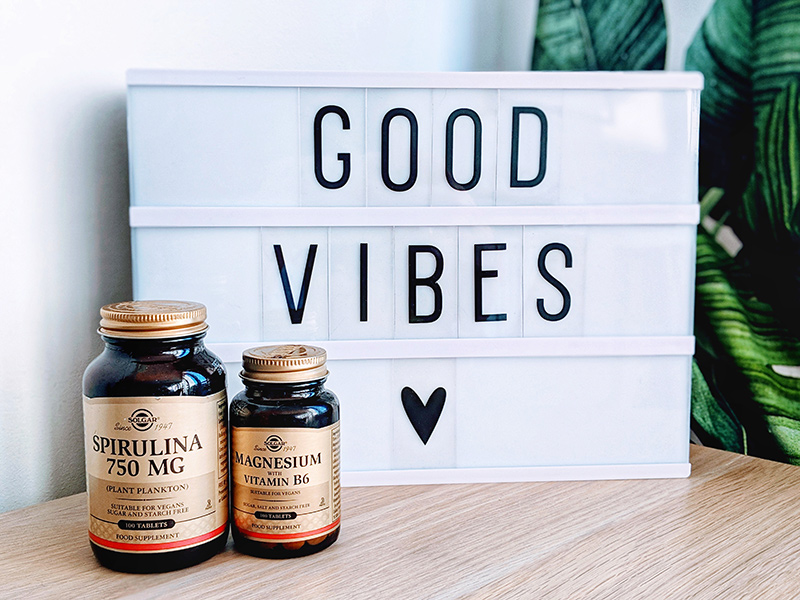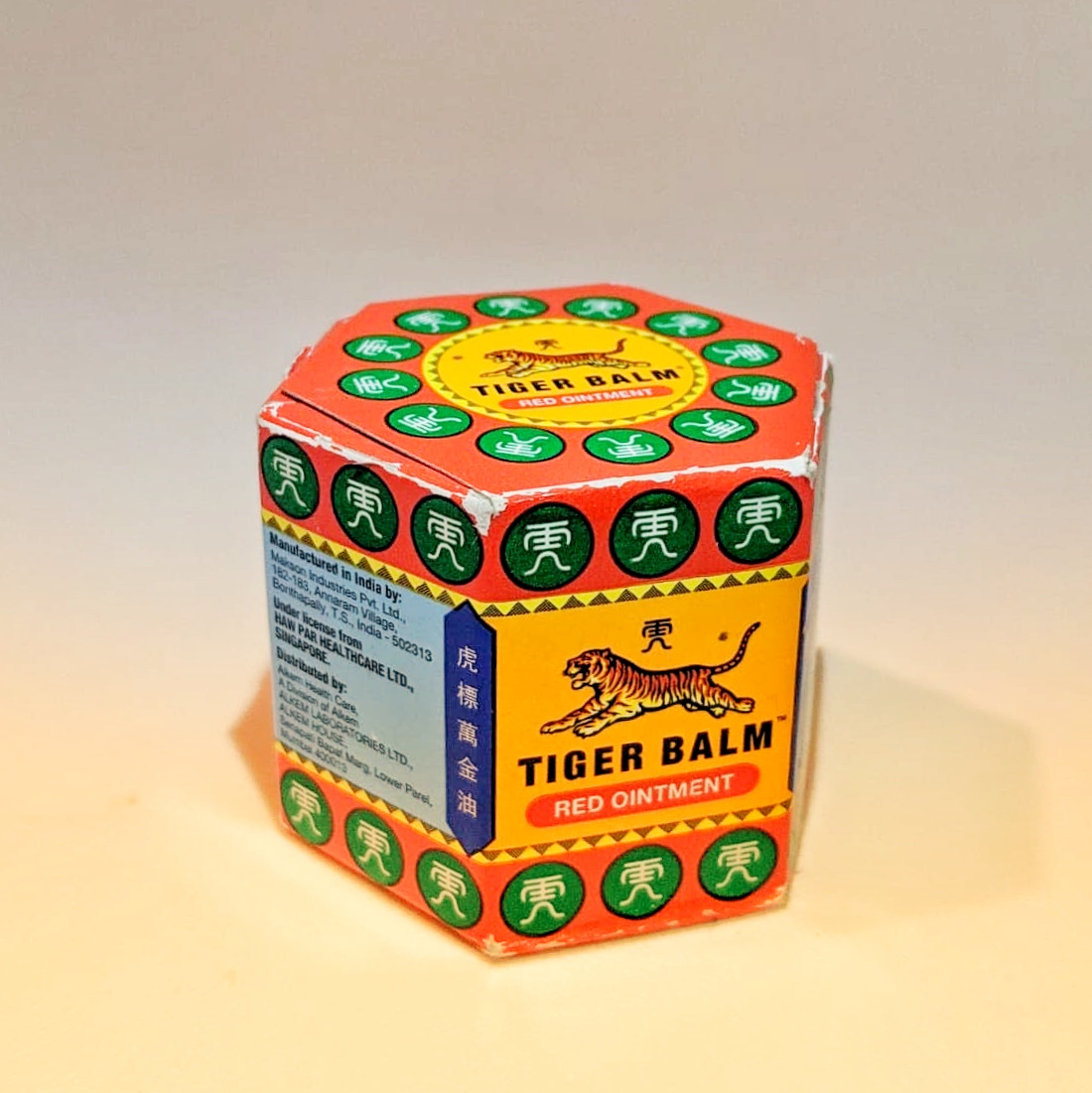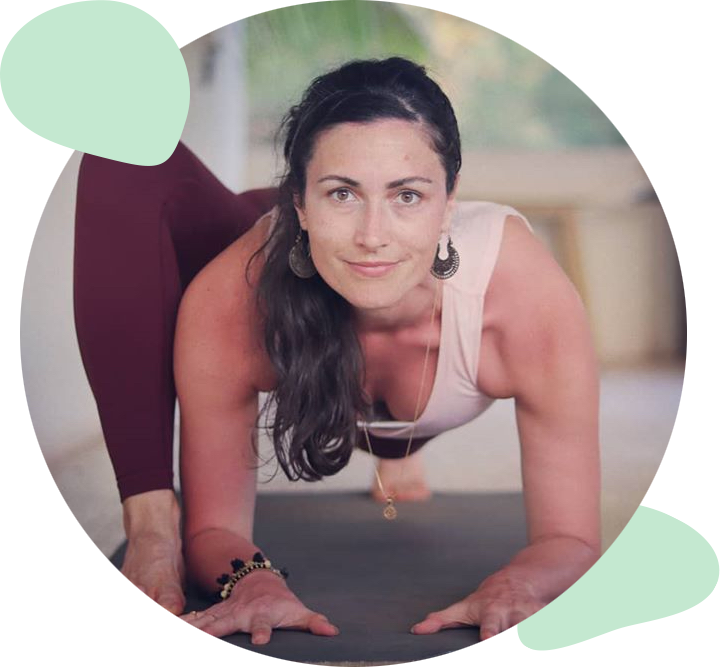First aid kit for a month of yoga in India
I spent a month in a country which is well-known for its « Delhi belly » and an upset stomach is the last thing you wish for when you plan on learning how to fold yourself like a pretzel. I have a morning routine at home and my body respond to it like clockwork. If I miss one step it usually means that I’m gonna suffer stomach cramps all day. Given this, I was even more concerned by my time in India knowing that I would have to follow a completely different morning routine and practice 3h (2h asana and 1h pranayama) before having breakfast.
The stuff I actually used could be broken down into four categories: energy, digestion, soreness and insects bites. I’m going to list out the things I took with me but please note that I’m no doctor nor pharmacist myself and this is in no way a prescription. You should always double check with your pharmacist before taking any medication.
Energy
We practiced an average of 3h every day apart from Sundays. On top of this, some classes such as alignement classes required to warm up and get into postures as well. In a nutshell, this has been a very active month. On top of this, the temperature (around 36 degrees) and the humidity meant that we did sweat a lot. The change of diet can also have an impact on your energy level given the amount of exercise you perform every day. If you’re used to eating animal based protein you may feel a difference when going from this to an exclusive vegetarian diet (however plants contain proteins too and Indian food has a lot of lentils and beans in it). To compensate for all these changes, I packed a few dietary supplements.
SpirulinaSpirulina is an algae with amazing properties. It contains proteins, vitamins (B1, B2, B3), Copper and Iron to name a few. It's also a powerful antioxydant and has anti-inflammatory properties that come very handy when going through a period of intense physical activity.
Magnesium & calciumAs I mentioned in the paragraph above, you will sweat a lot. Sweating isn’t necessarily bad but it means that you have to make sure you stay hydrated and that you get all the minerals your body needs, starting with calcium. Calcium is used by your body when you engage your muscles; it helps the myosin and the actin to bind. On the other hand, magnesium is used to help your muscles relax (by blocking calcium). That’s why lack of magnesium can lead to cramps.

Digestion
I feared digestion issues a lot. Both ways it can ruin a holidays. I can’t even start to imagine what would have happened if I actually had had digestive issues during my YTT.
Prevention: ultra-levure 200mgUltra-levure is like the ancestor of probiotics. It’s mostly used to help with diarrhea but can also be taken in a preventive way. I was recommended by my pharmacist to take some preventive ultra-levure so that my digestive system would adapt better to the change of diet. I can’t say for sure that it’s what helped me but I can guarantee you I haven’t been sick the slightest.
DiarrheaI’ve been lucky not to get any sickness due to food or water poisoning. But some of my friends who were brave - or reckless - enough to try and eat in random restaurants outside Sampoorna still remember that cooking hygiene standards aren’t necessarily the same everywhere in India! I took some Imodium, Smecta and some Nifuroxazide with me. Imodium stops diarrhea (but tends to leave you constipated instead so beware!). Smecta acts like a plaster all around your stomach and helps with stomach cramps. Nifuroxazide is an antibiotics. Which means it should only be taken if you get an infection.
ConstipationBelieve it or not, more people suffered from constipation than diarrhea! Given Sampoorna’s food was amazing on every aspect and we were provided with filtered water, people who ate at the center like me didn’t get sick. However, Indian dishes always come with rice. I’ve been surprised to realize that most people don’t know that rice tends to constipate. That’s why plain rice is recommended when one suffers from diarrhea: the same way rice absorbs water from your iPhone when you drop it in the loo (we’ve all been there), it absorbs water in your intestines. And dehydration leads to constipation. I had brought a few sachets of Transipeg which helps water to be retained in the bowel.
CharcoalLast but not least: charcoal pills. They can be handy when you practice yoga and eat quite a lot of vegetables such as beans, lentils, cabbages or onions… I guess I don’t need to develop any further on that one.
Soreness
Given you’ll practice every day several times a day, chances are high that you’ll feel sore at some point. The good news is that it’s fairly easy to book an amazing yet cheap body massage in India, which is going to save you from walking like a cowboy the day after an intense practice. But what tends to happen as well once your body starts experiencing fatigue is that you may injure yourself.
Tiger balmUnsurprisingly, you’ll be able to find some tiger balm even in Agonda so don’t panic if you forgot yours on your bedside table. I used it to massage my knee a couple of times before going to bed, and my friend Elizabeth taught me it’s actually very helpful to apply some on your sinuses and temples in case of migraine.
Heat patchesHeat patches are essentially the same thing as tiger balm but they stick to the painful area and they provide heat - and therefore release - continuously for up to 8h. I first used them when my right trapeze was completely tight due to a bad bench press position and it literally saved me. At Sampoorna I gave one to my friend Pim who got the same injury during her practice and she said it allowed her to sleep, which makes a huge difference when you’re following such an intense schedule.

Insects bites
Mosquitoes repellentTake 2 of those. And not your conventional one. Go for the Jungle special one! And be prepared as even with this you’ll be bitten unless you spray yourself every hour as soon as the sun goes down (and during the first 2 hours of the morning practice). At first I was using a regular spray I wanted to finish and I got bitten straight away on my bum - during happy baby, that’s so unfair! - by a mosquito as big as a dragonfly. With the Jungle special one I’ve seen a mosquito flying toward me and literally operating a U-turn when he reached a 10cm distance from my leg. I also had an insect repellent plug in my cabin. All I can say is that I haven’t seen one bug in my room for the whole stay...
After bite roll onBecause you won’t avoid mosquitoes bites anyway, I recommend you bring an after bite roll on to appease the itch. I discovered that one during my last holidays in corsica - it’s made out of essential oils and it smells really good.
Antihistamine creamI mentioned earlier the size of the mosquitoes but not that I want to scare you off, mosquitoes aren’t the only animals you’ll meet who are way larger in India. Spiders and ants seems to be on steroids too. It’s safer to take a antihistamine cream with you as you never know how your body would react to a jungle animal’s bite.
Comments
See all comments →Leave a comment.Fields marked with a * are compulsory. Your email won't be published.
Hello ! Alors, j'avais pris des barres avec moi au cas ou (j'imagine qu'on a du lire les mêmes articles ;) ) mais au final je n'en ai pas eu besoin. Après, même si j'adore prendre mon petit déjeuner, je n'ai jamais de problème à faire une activité physique avant de petit-déjeuner, mais je sais que certaines personnes peuvent faire des crises d'hypoglycémie si elles ne petit-déjeunent pas. Donc je dirais que c'est à toi de voir car il faut pouvoir tenir 2h d'ashtanga avec le ventre vide. Moi au final je préférais mille fois attendre les repas servis à Sampoorna (un délice à chaque fois) plutôt que de manger une barre protéinée.

 By Cyro
By Cyro 
J'ai lu quelque part qu'il valait mieux prendre des barres de céréales vu l'intensité du programme - tu en penses quoi?